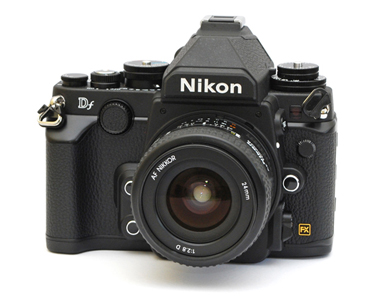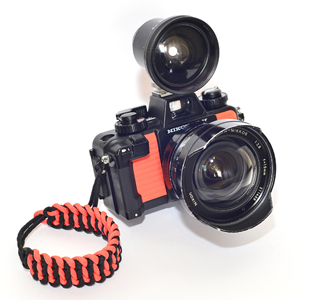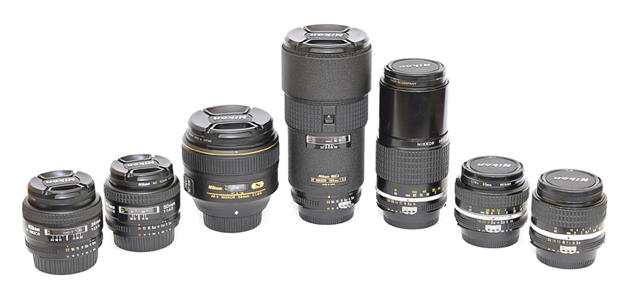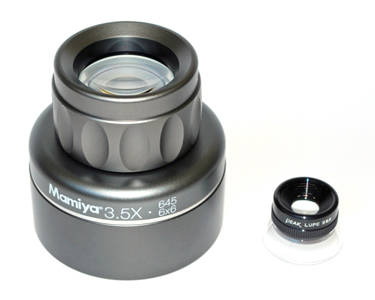Here is some of the equipment of my craft.

Nikon Df
The Df is Nikon’s first attempt at the world of retro looking digital cameras following the success of Fujifilm and Leica. Designed to look like a bulky FE/FM, the Nikon Df uses the same 16MP CMOS sensor as the D4. Consequently the images it can produce are incredible and its high ISO performance is certainly impressive and well beyond what I am use to. However, I can’t help but feeling Nikon held back somewhat with the Df and really just put a pretty dress on a D700 to test the waters. I wish they had taken a leaf out of Leica’s book when it came to moving the M series into the digital age.

Nikon F Series
The Nikon F series has proved to be the world’s standard for top of the line SLR cameras. They were designed for journalists to be adaptable, reliable and often indestructible. They have been used to capture every inch of this planet, they have seen every conflict since their respective releases and even used in space. They are special cameras, as are many of the Nikkor lenses that have been designed for them. I currently own and use the F3, F3P, F4 and F5. The F4 is the most compatible of these Nikons and built like a tank. The F5 is just an incredible camera and arguably my favourite. Even today’s top of the line digital cameras owe much of their development to the F5. However the F3 is my opinion, the best 35mm manual focus SLR ever made. It has been the workhorse of many leading photographers and photojournalists and still continues to produce stunning images 40 years after it was first introduced. As a testament to its design Nikon kept it in production for 21 years! The F3’s hold a special place for me and always will.

Nikon F100
As a relative newcomer to my camera bag, I wonder why I put off the F100 for so long (probably because I already had the F5). There’s a reason Galen Rowell loved it, it’s almost without fault and perfect to travel with. It really is a fun, simple but professional grade camera that is perfect for any level of photography.

Nikonos V
This is the last Nikonos underwater rangefinder camera produced by Nikon. It’s as solid as it looks and relatively easy to use. The 15mm shown above is corrected for underwater use only and as a result is sharper than anything else produced to date. Underwater photography is not an easy subject to master but this makes it a whole lot of fun.

Nikkor Family
Nikkor was the reason to shoot Nikon and still is. Unless you’re a Leica Man, good Nikkor glass is hard to beat. No zoom’s to see here either, just solid little primes. Each one carefully picked for it’s optical qualities and utility. These are my eyes in which to view and record the world.

Fuji GW690III & GSW690III
These oversized rangefinders from Fujifilm are aptly dubbed the ‘Texas Leicas’ for obvious reasons. The technical image quality and real estate of the 6×9 negatives are astonishing however you only get 8 frames per roll of 120 film. Not without it’s compromises (limited shutter speeds and a silly T setting) these mechanical cameras lets you slow down and enjoy the art of making images.

Film
I shoot both slide and B&W film for most of my work. Print film has never really given me the colours or contrast that I like. There are still many films to choose from and I have tried most of them. My preference is usually Fujifilm Velvia 50 or Velvia 100 for longer exposures. For B&W film I can’t get past Kodak Tri-X 400 or Fujifilm Acros 100. They are both brilliant. Standard medium-res scans equivalent to just over 7MP are what I get in return and are more than sufficient for web use or a good 8×10 print. For anything larger I will have them scanned on a Noritsu or use my Epson V800.

Filters
Filters are an important part of photography, especially for film where your white balance is fixed and your exposure latitude is limited. All lenses should have a good quality UV filter to protect them. Other than that, full ND and grad ND filters are essential to balance the sky or slow things down. Occasionally I use a 81A to warm things up and have just started experimenting with the Tiffen CC30M (colour correcting 30 points of magenta) thanks to some of the inspiring work of Joe McNally. The ND400 is a special use only. I also have a C-PL but rarely use it.

The Light Table and the Loupe
There is only one way to appreciate reversal film. Look at it on a light table for what it really is – vibrant and stunning! Colour is everything when it comes to this type of film and it is why I use it. There is also a unique depth given to the images when backlit. A good quality loupe is also a must if you are going to shoot and view slides. There are many out there so let me simplify the choice for you – Mamiya. Their optical and build quality are second to none. I also have a 22x Peak loupe for close up work to check details and sharpness.


